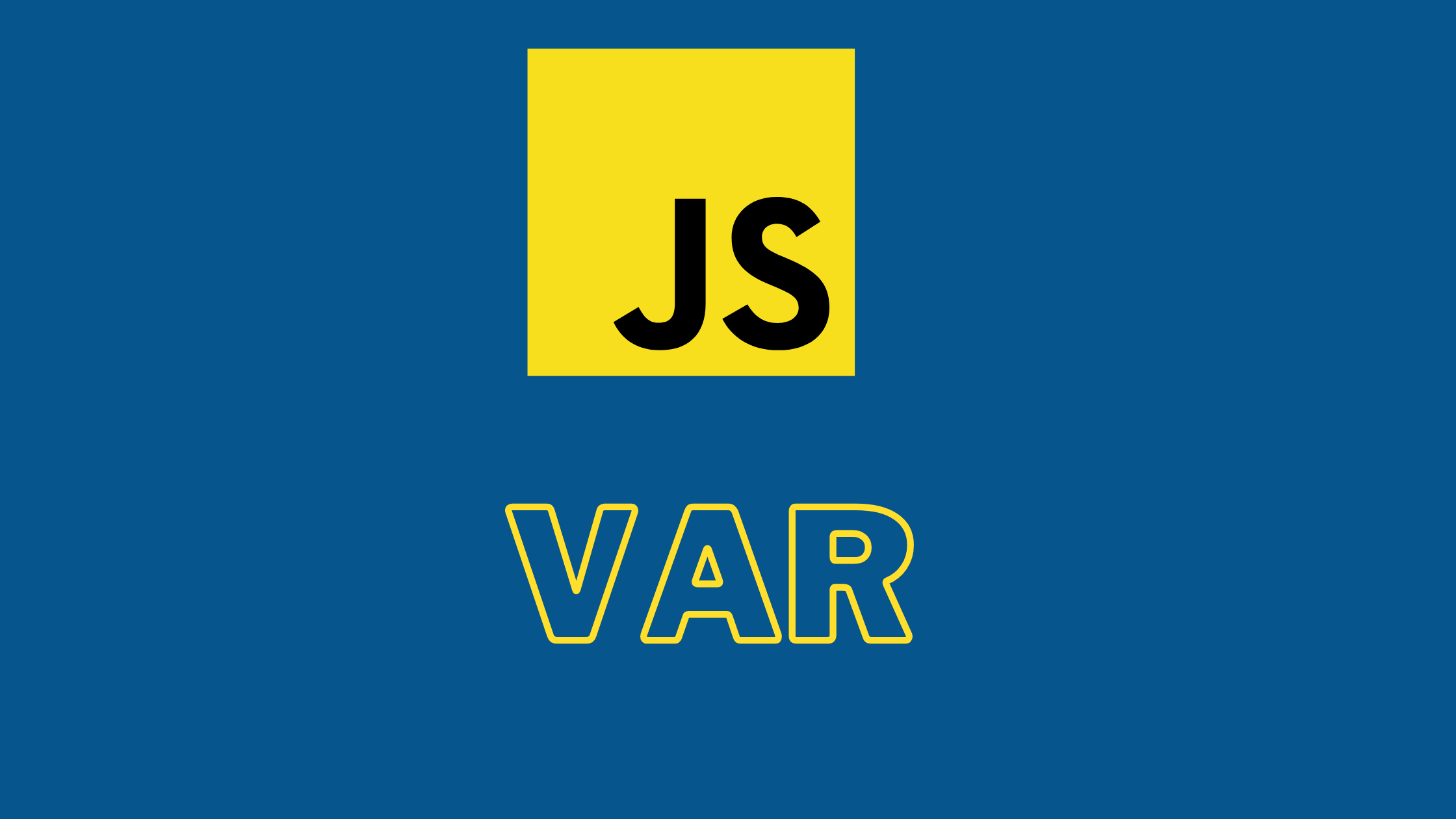JavaScript var

Variables represent a memory location where data can be stored. Basically, they are names of boxes in which we can put data values. But to use variables we need to declare a variable, then assign a data value to it. In Javascript, variables are declared with keywords var, let, and const.
Note: In Java and many other languages variables are declared with different keywords like int for integer type of data values or char for characters. But in JavaScript, we have general keywords for all types of data values whether they are integer, decimal, boolean, or strings.
ES6 introduced let and const keywords but var was the only option before 2015. In this article, we are going to discuss var specifically.
The var
- The var declares a function-scoped or globally-scoped variable in Javascript.
- It doesn't create a "block" scope.
- Same variable can be declared many times.
- Variable declared with
varare hoisted and initialized withundefinedvalue.
1. Syntax
var x = 5;
console.log('value of x is: ', x); // value of x is: 5
var str = "I am a string";
console.log(str); // I am a string
var myFunction = function() {
console.log('hey');
}
console.log(myFunction); // ƒ () {console.log('hey');}
Javascript Variable Naming constraints: The name must contain only letters, digits, or the symbols $ and _, and the first character must not be a digit.
2. Scope
var declares a function-scoped or globally-scoped variable but can't create block scope.
2.1 Global Scope:
var value = 10;
function logger() {
console.log(value); //10
}
console.log(value); //10
The value variable is in the global scope so, we can access it anywhere in this scope whether it is inside a function or after 10000 lines.
2.2 Function Scope:
function mood() {
var happy = true;
console.log(happy); // true
}
console.log(happy); // ReferenceError: happy is not defined
The value variable is in the function scope so, we can access it only in the mood function but not outside of it. It will give us a Reference error.
2.3 Block Scope:
var a = 10;
if (a > 10) {
var name = 'hashnode';
}
function logger() {
console.log(name);
}
logger(); // hashnode
console.log(name); // hashnode
Here name variable doesn't create block scope but instead, it is visible everywhere like a variable in the global scope. So, we can't declare any private variables in this if block i.e block scope is not possible.
Before 2015 when var was the only option to declare variables then to obtain block scoping we could use the IIFE pattern.
IIFE: Immediately invoked function expressions. It describes a function expression that can be called immediately and has its own private variables. Example:
(function() {
var greeting = "Good Morning!";
console.log(greeting ); // Good Morning!
})();
In this syntax, the function is wrapped by parenthesis and then immediately called using ().
Solution: To create a block in our example above we can define the if condition in IIFE like below:
var a = 10;
(function() {
if (a > 10) {
var name = 'hashnode';
}
})();
console.log(name); // ReferenceError: name is not defined
3. Redeclaration and re-initialization
Variables declared with var can be declared and initialized again. Javascript doesn't throw any error.
var browser = 'Mozilla';
var browser = 'Chrome';
console.log(browser); //Chrome
The latest assigned value replaces the last value.
4. Hoisting
Variable declarations are processed first before any code is executed. So, declaring a variable anywhere in the code is equivalent to declaring it at the top. This behavior is called "hoisting", as it appears that the variable declaration is moved to the top of the scope: the function or global.
test = 10;
var test;
// In simple terms above code is processed as below
var test;
test = 10;
With var, we can assign value first then declare the variable it won't throw an error. There are three steps happening here:
- variable declared with var is hoisted
- during the compile-time variable is assigned the
undefinedvalue. - when it reaches initialization like in our example
test = 10, then the updated value is assigned to the variable.
Note: Declarations are hoisted but not the assignment.
Example:
console.log(band); // undefined
// ---some code
band = "Coldplay";
console.log(band); //coldplay
// ---some code
var band;
The band variable is processed before the first console due to hoisting but the only declaration is hoisted not the assignment. So, its value is undefined initially. It is like assigning the undefined value to the band variable. During execution when the real assignment is done then the value Coldplay is assigned to the band variable.
Miscellenious Example
for(var i = 0; i < 5; i++) {
console.log(i);
}
console.log(i); // 5
Block scoping is also not created in case of
forloop:
References:
Thanks for reading the article!